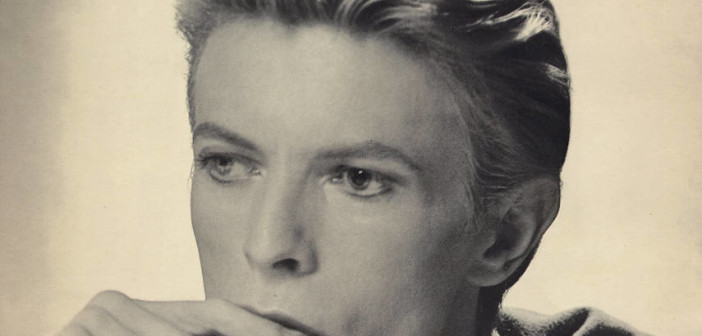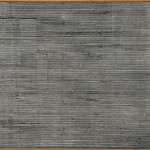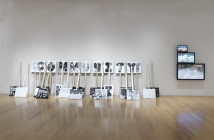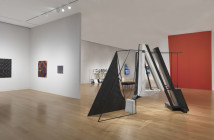It’s impossible to stop the flow of time. A year ago, BR&S innocently jumped into the various local art ecosystems hoping that our experiment would last longer than a few months and we’d have some level of support. Well, we lasted longer than a few months and are ready to makes some adjustments in our second year, but there is no question that our readers have provided us with a great level of energy and support. We thank you for that.
Internally, Anulfo Baez, the lead on our award winning blog, has resigned as editor. The content we were able to offer and our general outlook would not have been the same without him. In addition to commissioning and organizing some great content, his voice created a melody that we will not be able to replace. It blended architecture, small New England museums, urban planning, and, yes, sneakers into what otherwise would have been a blog filled with important, but obvious subjects like studio visits or interviews. He will be missed.
Anthony Greaney closed his gallery at the end of July. Opening in December of 08, his first few shows were predominately photographers (Carlin Wing or Louisa Conrad for example) and transitioned over the last four years into a gallery that exhibited a mix of tricky sculptures (I don’t think 10% of the people who harrumphed their way out of Ian Jeffrey’s May 2012 BLOODY HI-TOPS knew that the Converse hi-tops were in fact a handmade sculpture and not store bought sneakers), trippy videos, and performances. Some people will not miss his gallery’s iconic lighting, but his dynamic programing and his ability to stay open for people whose bedtime isn’t 8 P.M. will certainly be missed.
 Aurélien Froment, Pulmo Marina, HD Video, 2010.
Aurélien Froment, Pulmo Marina, HD Video, 2010.Photo: Aurélien Froment, Monterey, 19 February 2010.
Courtesy of the artist, Motive Gallery (Amsterdam) and Marcelle Alix (Paris).
João Ribas has resigned as the curator of the MIT List Visual Arts Center. The shows that he organized—which were almost all solo shows—at MIT (since 2009) were always crisp explorations of their subjects. It seems minor until you try to organize an exhibition, but the quality of loaned objects that Ribas was able to bring to MIT meant that he was never hampered as a curator of a university gallery. No museum anywhere has everything a curator wants to show, but the List has consistently exhibited objects that a faint-hearted curator would not have been able to access. His exhibitions for Frances Stark, Stan VanDerBeek, the Otolith Group, Otto Pienne, Cheyney Thompson, Joachim Koester, Amalia Pica, Nairy Baghramian, Alan Uglow, and his Into the Holocene gives me confidence in the upcoming Chris Marker show. We at BR&S wish him luck, and are anxiously looking forward to finding out what he will be doing next as well as who will be the List’s new curator.
In better news, the Peabody Essex Museum and Wellesley’s Davis Museum have both added new curators (coincidentally both are coming from the Smithsonian Institution), the Boston Center for the Arts has hired a new Associate Director for Visual Art, and Katy Siegel has joined Brandeis as a Curator at Large.
Dr. Siegel is curator at Hunter College, CUNY, as well as a professor there. Her book Since ’45: America and the Making of Contemporary Art was released in 2011. In Since '45, she establishes a history where post-war American art was not just an import from Europe but a branch of Art History in its own right. As Curator at Large, her first show at Brandeis will be Light Years, Jack Whitten, 1971- 1973. Whitten is an abstract painter whose work in the '70s was influenced by the abstract expressionists, but this work created a new pictorial language that developed beyond the concerns and techniques of the ab ex painters. Focusing on the process of making a painting—the objects, the paint itself, the three dimensionality of it all—has allowed him to create new operations which revealed new types of abstraction. Siegel and Whitten will be in conversation with Michelle Kuo, Mingus Mapps, Mark Bradford, and Howard Singerman on October 5th.

The Peabody Essex has hired Daisy Yiyou Wang as the curator of Chinese and East Asian Art. She has worked on the Shanghai Biennale and at MFA Boston, Asia Society, Guggenheim, as well as the Freer and Sackler galleries at the Smithsonian. While her work on shows of historical subjects, like the discovery of the Xiangtangshan caves in China, doesn’t sound like it is our normal subject (contemporary art, just in case that’s a question…), her work and exhibition history are very interesting and diverse. We welcome her and look forward to her exhibitions.
In a more contemporary vein, the Davis has hired Michael Maizels as New Media Curator and Lecturer, a position that funded by the Mellon Foundation. Most recently, Maizels was a pre-doctoral fellow at the National Portrait Gallery and received his Ph.D from UVA this year. Beyond his academic writing, he has curated a number of shows, primarily in the mid-Atlantic. His thesis explored Barry Le Va, a sculptor whose installation work from the '60s and '70s used unusual materials (Broken glass, felt, chalk, meat cleavers, etc.) in arrangements that seemed unplanned. The chaos was never accidental and, to Le Va, was always readable, if the viewer spent the time needed to decipher the clues.

Finally, a name that should be familiar to our readers, Randi Hopkins has become the Associate Director of Visual Art at the Boston Center for the Arts. She was co-founder and co-director of the Allston Skirt Gallery, was associate curator at the ICA, wrote for the Phoenix, taught at Simmons College, and currently is presenting a multi-state exhibition of Barbara Bosworth’s photography in cooperation with the National Park Service, the Appalachian Mountain Club and the Connecticut Forest and Park Association as well as multiple museum venues. We look forward to seeing how Hopkins programs the Mills in the coming years and watching the BCA’s ongoing commitment to contemporary art flourish.
- Jack Whitten, Omikron I, 1977
- Aurélien Froment, Pulmo Marina, HD Video, 2010.Photo: Aurélien Froment, Monterey, 19 February 2010.Courtesy of the artist, Motive Gallery (Amsterdam) and Marcelle Alix (Paris).
- Barry Le Va, Cleaved Wall, 1969-70.








